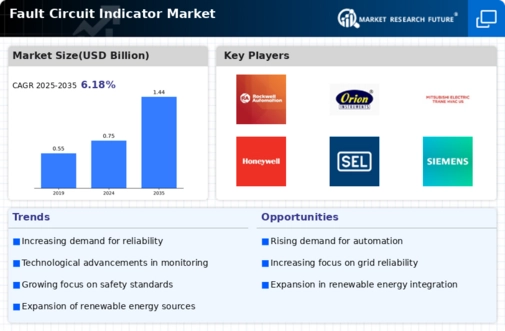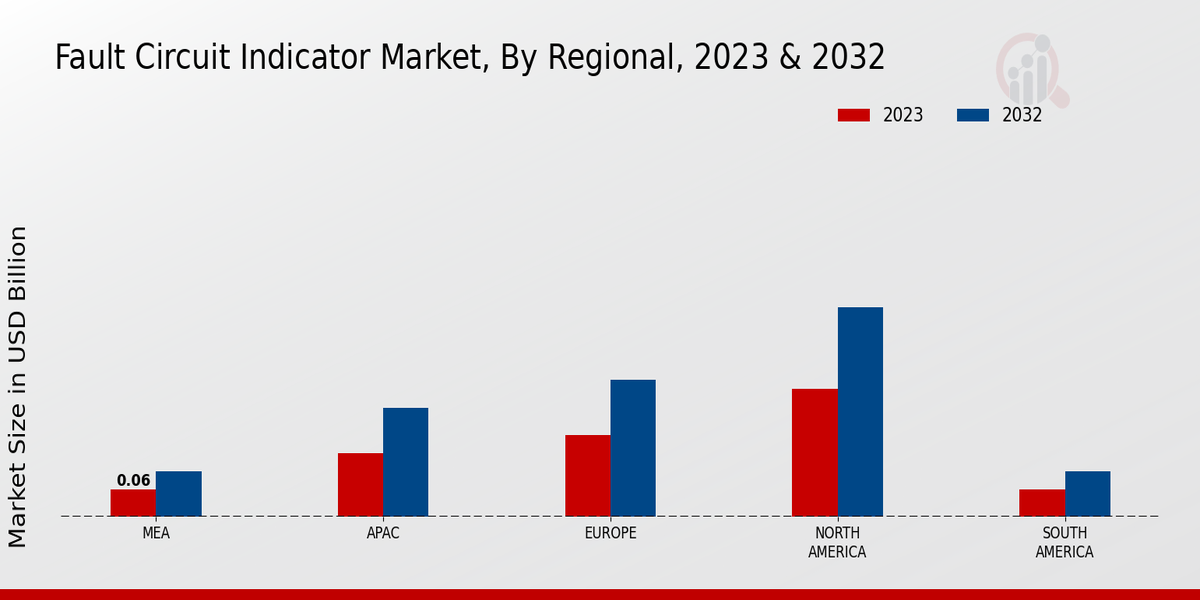The Fault Circuit Indicator Market is characterized by a competitive landscape that plays a crucial role in supporting utility companies and industries to maintain safe and efficient electrical systems. As the demand for reliable and sophisticated electrical grid management continues to rise, market participants are developing advanced fault circuit indicators to enhance the ability to detect and isolate electrical faults quickly. The competitive dynamics within this market are driven by technological advancements, growing investments in electrical infrastructure, and increased emphasis on maintaining power quality and reliability.
Companies operating in this space are continually striving to innovate and differentiate their products, catering to various customer needs across diverse geographic regions. This highly competitive environment necessitates that firms not only focus on enhancing their product offerings but also invest in building strategic partnerships, improving customer service, and expanding their geographical reach. Rockwell Automation has established a solid footprint in the Fault Circuit Indicator Market, leveraging its reputation for innovation and quality.
With a strong emphasis on automation and control solutions, Rockwell Automation combines advanced technology with user-friendly design, ensuring that its fault circuit indicators meet the evolving demands of the electrical infrastructure sector.
The company's commitment to research and development enables it to stay ahead in terms of product functionality and performance, making its offerings highly attractive to utility companies and industrial customers alike. Rockwell Automation's strengths also lie in its extensive distribution network and robust customer support, allowing for rapid response times in product delivery and service, thereby enhancing customer satisfaction. This strategic positioning underpins the company's competitive advantage in navigating the complexities of the Fault Circuit Indicator Market.
Orion Instruments is another vital player in the Fault Circuit Indicator Market, recognized for its specialized solutions tailored to meet the specific needs of the electrical industry. The company's focus on high-quality, reliable technology sets it apart from competitors, as it emphasizes precision in fault detection and localization. Orion Instruments takes pride in its commitment to continuous innovation, with a range of products designed to ensure minimal downtime during fault events, thus providing significant operational benefits to customers.
Its products are known for their advanced technology and durability, which resonate well within environments requiring stringent safety standards. The company cultivates strong relationships with its clients, prioritizing comprehensive customer service and technical support, which enhances customer loyalty and solidifies its market presence. As a result, Orion Instruments plays a crucial role in shaping the competitive realm of the Fault Circuit Indicator Market through its dedicated focus on quality and customer-centric solutions.






















Leave a Comment